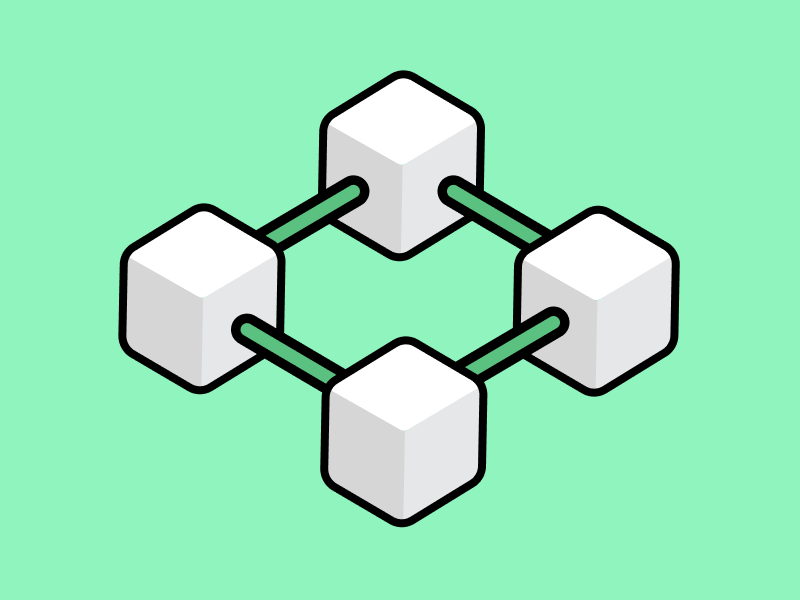Understanding Node and Its Function in Blockchain

Node is an important part of a blockchain network, a digital ledger that records transaction information of crypto assets. Nodes ensure Bitcoin can operate as a peer-to-peer distributed economic system and make the blockchain a trusted network, which anyone can monitor without one party having complete control.
So, what is a node and how does it work? See the explanation further in this article.
What are Nodes?
The Bitcoin network is run by multiple nodes which are referred to as the peer-to-peer Bitcoin protocol. Nodes are computers that communicate with each other where the computers follow certain rules and share information with each other. Bitcoin nodes have several functions, such as a place to store blockchain databases, maintain consensus between each other, validate and maintain peer-to-peer networks.
There are several types of records in the Bitcoin network, including:
- Full nodes
- Simplify Payment Verification (SPV) nodes or light nodes
- Mining Nodes
A node must be connected to different peers to form a path in the Bitcoin network. If one of the nodes is offline, then the node must connect to another node or a new node. This is so that the node will keep up-to-date information.
Full Node
A full node is a node that stores all transactions in the blockchain. Full Nodes store all the latest data from the Bitcoin Blockchain from when Bitcoin was created. A full node can independently verify all transactions without relying on other nodes or sources of information. To run a full node, you need a minimum capacity of 400 gigabytes.
Running a Full Node provides a complete Bitcoin experience because you can participate in verifying all transactions independently without having to depend on anyone. Full nodes will use the Bitcoin network to receive updates of blocks and all new transactions. A full node will verify and enter this information into a copy of the Blockchain that it owns. Thus by running a full node, you are also helping to maintain the Bitcoin network. The more full nodes that participate, the more secure the Bitcoin network will be.
Below are the purposes of running full nodes:
- By running a full node, you have full control to ensure that this Bitcoin protocol is adhered to. Nodes can reject blocks or transactions that don’t follow the bitcoin consensus rules by denying connections from the sender.
- If you don’t run full nodes, it means you have to depend on the nodes of the service provider. By running nodes yourself, you don’t have to depend on others.
- If there is a hard fork or the program has forked, the full node can choose which Blockchain he wants to follow based on his wishes. For example, when Bitcoin is forked into Bitcoin core and Bitcoin cash, full nodes can choose which chain they want to follow. In other words, full nodes functions as a voting tool.
- Running full node gives you complete privacy.
SPV Nodes
SPV Nodes are storage nodes that do not require a record of all transactions from the Blockchain. SPV Nodes only fetch the header blocks and do not download all transactions in the block.
Simply put, the full node has complete data from the first Bitcoin formed to date, while SPV only has a summary. SPV is usually used to facilitate services that do not have a large enough memory capacity such as a mobile wallet.
SPV nodes have weaker security than full nodes. Full Nodes record all transactions so that he does not need to open information about addresses in the wallet, while SPV Nodes receive a filtered list of transactions related to addresses in the wallet.
Mining Nodes
Mining nodes are nodes in the Bitcoin network that have a special function for mining. Like other Nodes, miner nodes receive and broadcast transactions into the Bitcoin network. Miner nodes have a special function to collect these transactions into a new block.
After the miner validates the transaction, the mining node will put the transaction into the memory pool where the transaction will wait to be included in a block.
Consider the stories of the following three people: A, a miner, B, and C, Pintu app users. B wants to use the Pintu application to send 1 BTC to C. The transaction will be entered into the memory pool after B has completed it. A starts his mining machine and accumulates hundreds of transactions into candidate blocks, which will be added to the blockchain network later. The transaction from B and C is one of the transactions that A collects. A sets up numerous mining computers and begins validating the block with the SHA 256 algorithm.
After around 10 minutes, A discovered a hash that corresponded to the mining target. This block is also thought to be legitimate. The block will then be disseminated to all of A’s peers by A’s mining node. When another mining node receives and validates A’s block, the other miners start working on the next new block right away.
Summary
- Nodes are computers that connect to the blockchain network and communicate with other computers to ensure network security and integrity.
- On the Bitcoin network, for example, there are three types of nodes, namely full nodes, SPV nodes or light nodes and mining nodes.
- All three have different functions. Full node is a node that stores all transactions in the blockchain. SPV nodes allow users to check whether or not multiple transactions are offered in one block, without having to download entire blocks of data, while Mining nodes are nodes in the Bitcoin network that have specific functions for mining.
Share
Table of contents


